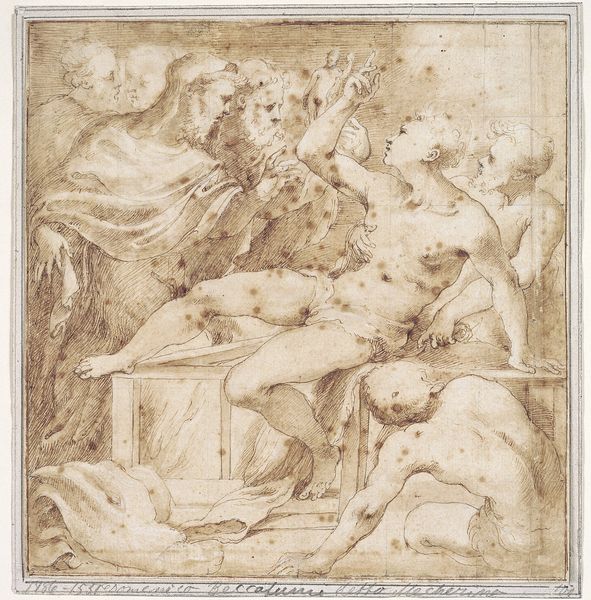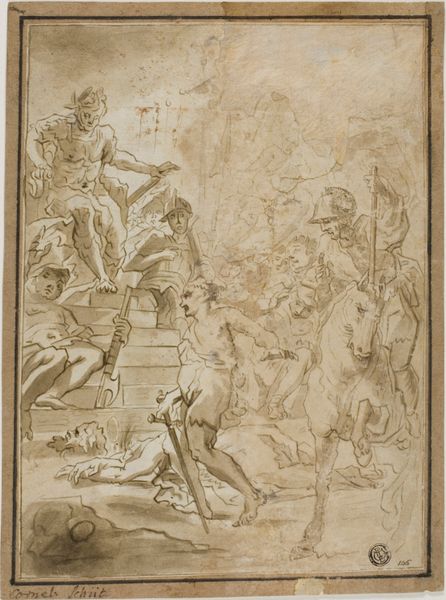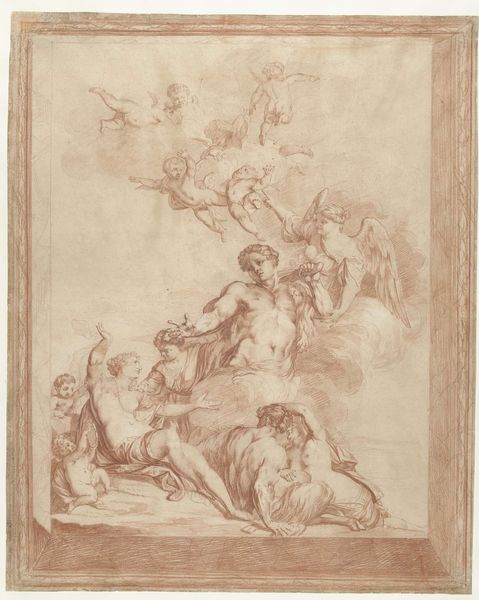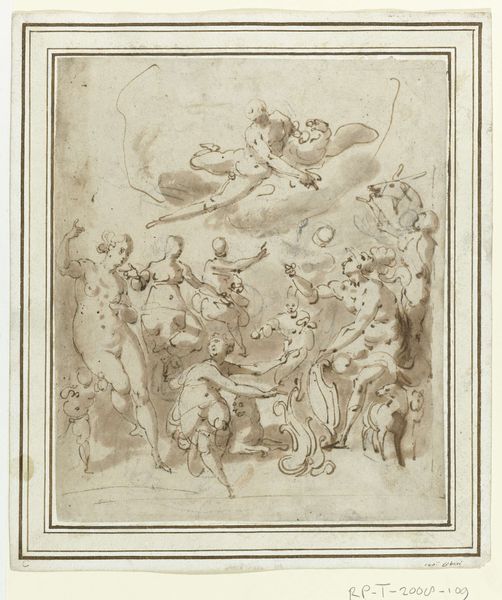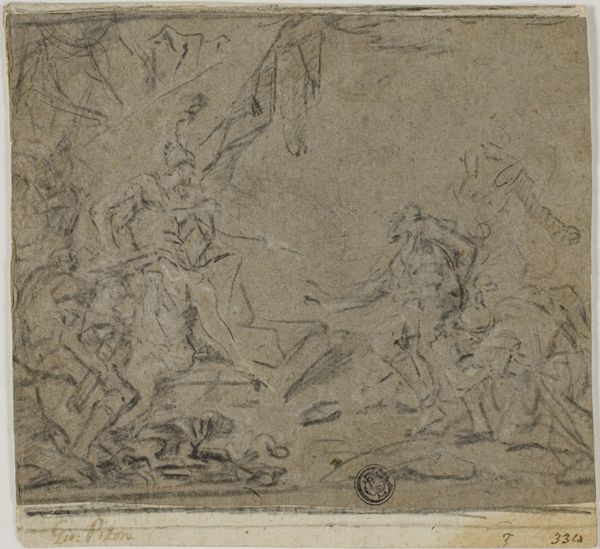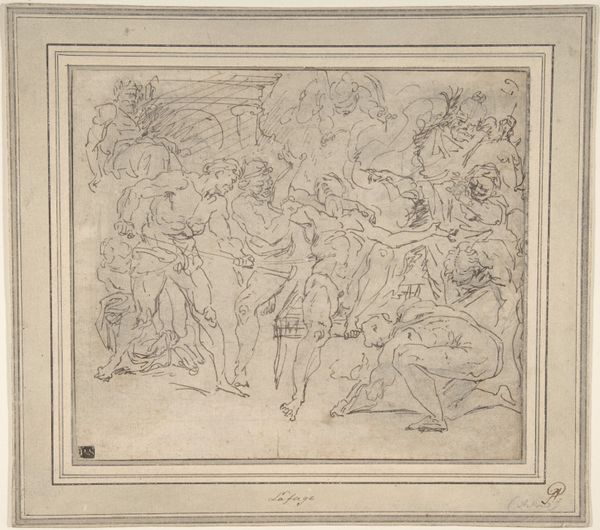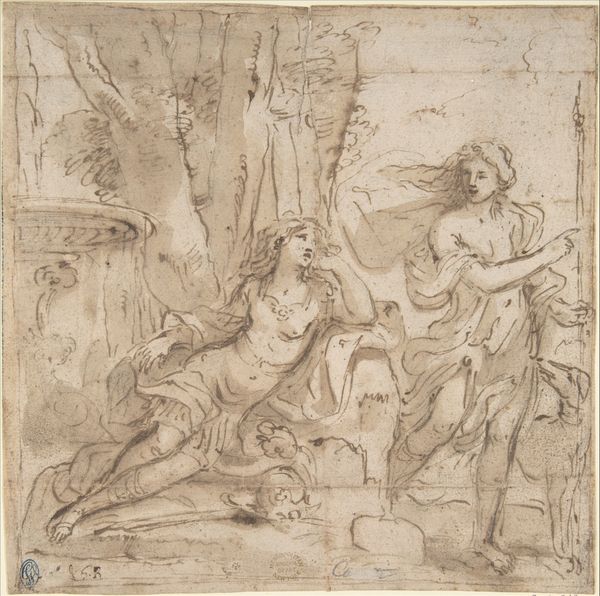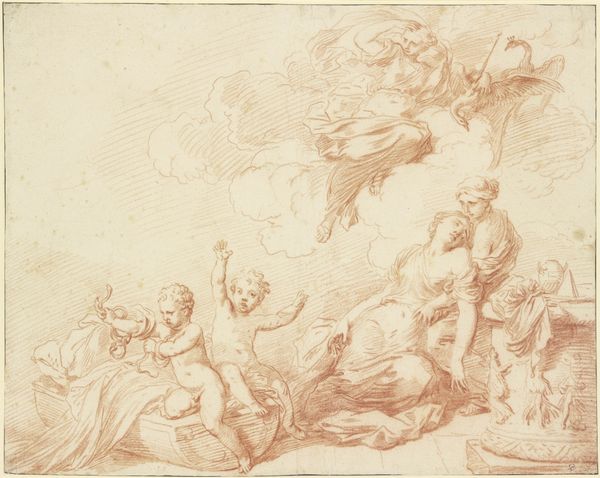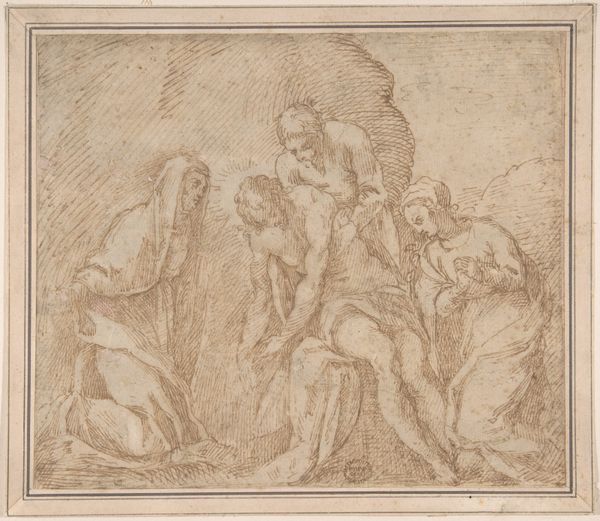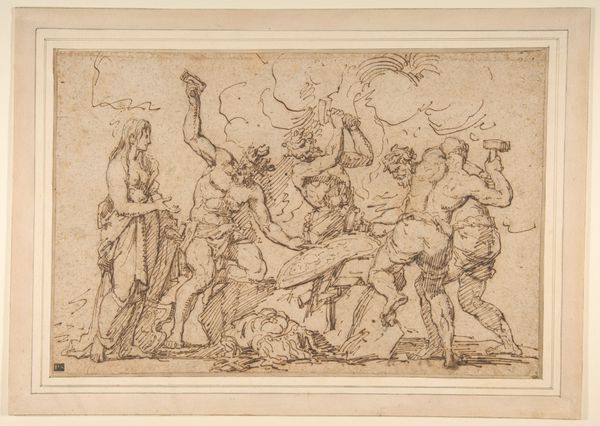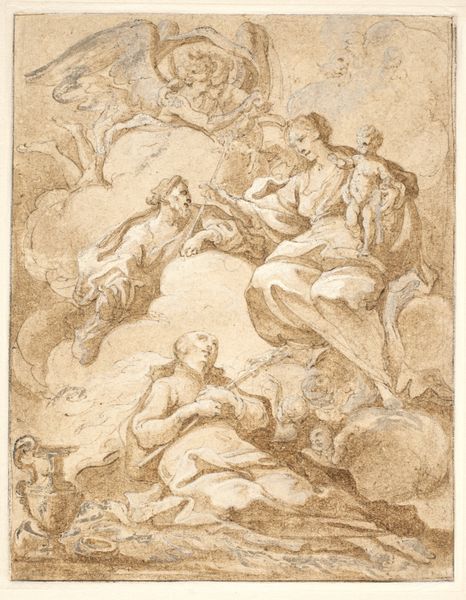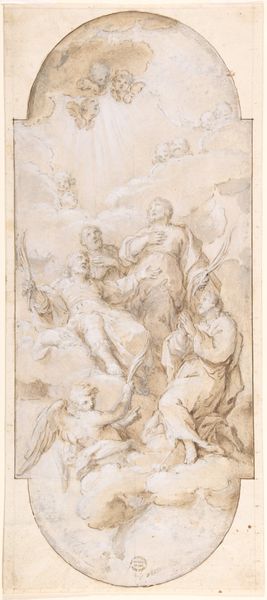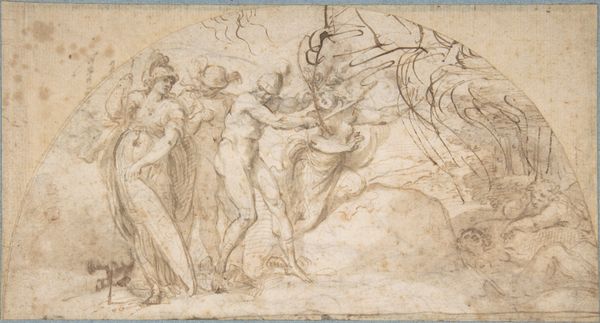
Erminia and the Shepherds (a scene from Torquato Tasso's Gerusalemme Liberata) 1650 - 1700
0:00
0:00
drawing, print, ink, pen
#
portrait
#
drawing
#
toned paper
# print
#
landscape
#
figuration
#
ink
#
horse
#
men
#
pen
#
watercolour illustration
#
history-painting
Dimensions: 8-15/16 x 8-15/16 in. (22.7 x 22.7 cm)
Copyright: Public Domain
Editor: This is a pen and ink drawing entitled "Erminia and the Shepherds" made sometime between 1650 and 1700 by an anonymous artist. It reminds me a bit of looking at a classical frieze; a story being told in a continuous line. How might we read its meaning from a production standpoint? Curator: It’s fascinating to consider how this drawing might have functioned within the larger workshop system of the time. Pen and ink was a common method of production. Who was producing these drawings and what determined their economic and cultural value? Editor: Are you suggesting that even a scene depicting nobility can be seen through the lens of labor? Curator: Absolutely! Consider the social context. Paper, ink, and even the artist’s time represent material resources and skilled labor. How was this paper manufactured, who ground the inks, and what was the artist's place in society? This piece exists as part of a network of makers and consumers, not just as an isolated creation. Editor: So, by analyzing the materials and production processes, we’re revealing a deeper understanding of the art's historical and economic circumstances. Does that alter the way we see the "story" that the artwork depicts? Curator: Indeed. Looking at the quality of the toned paper, for example, raises questions about its origin and the intended audience. Was it for practice, presentation, or perhaps eventual reproduction as a print, thus reaching a wider market? These considerations collapse traditional distinctions between high art and more quotidian forms of image making. Editor: I never really considered the drawing as a product before, but I see how that viewpoint connects it to a bigger world. Thanks, that perspective makes me see the art differently. Curator: Likewise, thinking through production is always revealing, and grounds interpretation in the realities of making.
Comments
No comments
Be the first to comment and join the conversation on the ultimate creative platform.
